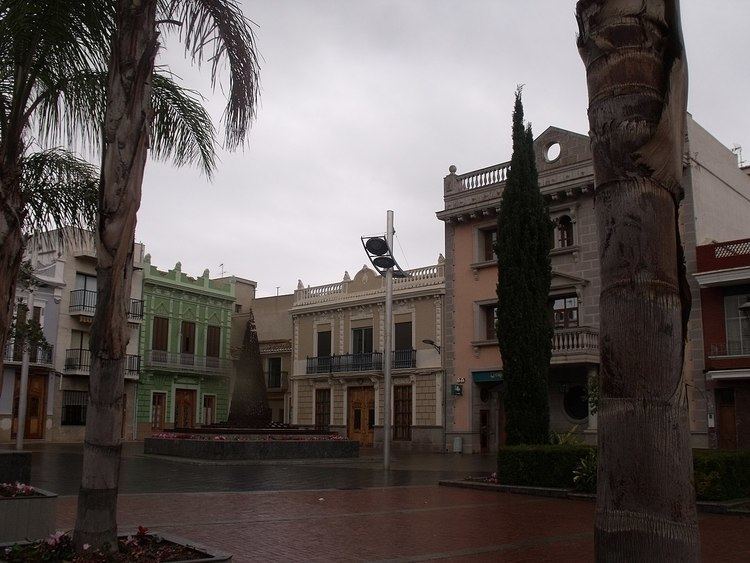Country Spain Time zone CET (UTC+1) Area 85.78 km² Local time Friday 10:56 AM | Judicial district Picassent Elevation 50 m Population 20,393 (2014) | |
 | ||
Demonym(s) Picassentí, picassentina Weather 14°C, Wind NW at 5 km/h, 63% Humidity | ||
Picassent ([pikaˈsent]) is a municipality in the comarca of Horta Sud in the Valencian Community, Spain.
Contents
Map of Picassent, Valencia, Spain
Picassent is a town of close to twenty thousand people. Originally the town's main economic activity was agriculture, however during the last twenty years Picassent developed two industrial areas adjacent to the city centre. The excellent communications and its distance to the main City of Valencia have converted Picassent in an ideal location (and cheaper) for the city workers that commute every day.
In the surrounding countryside, one of the largest of the cantons (comarca), the locals grow orange trees.
The municipality is composed by several neighbourhoods, some more formal than others. Traditionally these neighbourhoods were attached to the three Churches sited next to three main town squares: "San Cristobal" next to the townhall square, "Milagrosa" next to the Market square and "l´hermita de la Vallivana" next to "l´hermita" square.
The town celebrates two main festivals a year, one on 10 July in honour of "San Cristobal" and another on 8 September in honour to "Virgen de la Vallivana". During the July festival there is a week of "bous al carrer", a version of the well known "San Fermin" in Pamplona. Also in September the main day (the 8th) is surrounded by a week of multiple activities: from religious processions to classic and rock music concerts and fireworks.
Picassent has an Underground station (Line 1) whose name is "Picassent". This connects the city centre of the municipality with the capital València. It takes half an hour more or less going from Picassent to Valencia city centre.
It hosts the two main prisons of Valencia.
History
The village origins are old. Antiques have been found from the Bronze Age. It got the entitlement of 'village' in 1324, and on 22 October 1364 it came under the control of Pere Boil Colom. Its population in 1510 was less than 400 people, around 100 families, which got halved during the war with
The older area is known as the "Carrerons" (meaning long streets in the local language).
The village kept its original walls until 1820.
Some remaining historic building are
